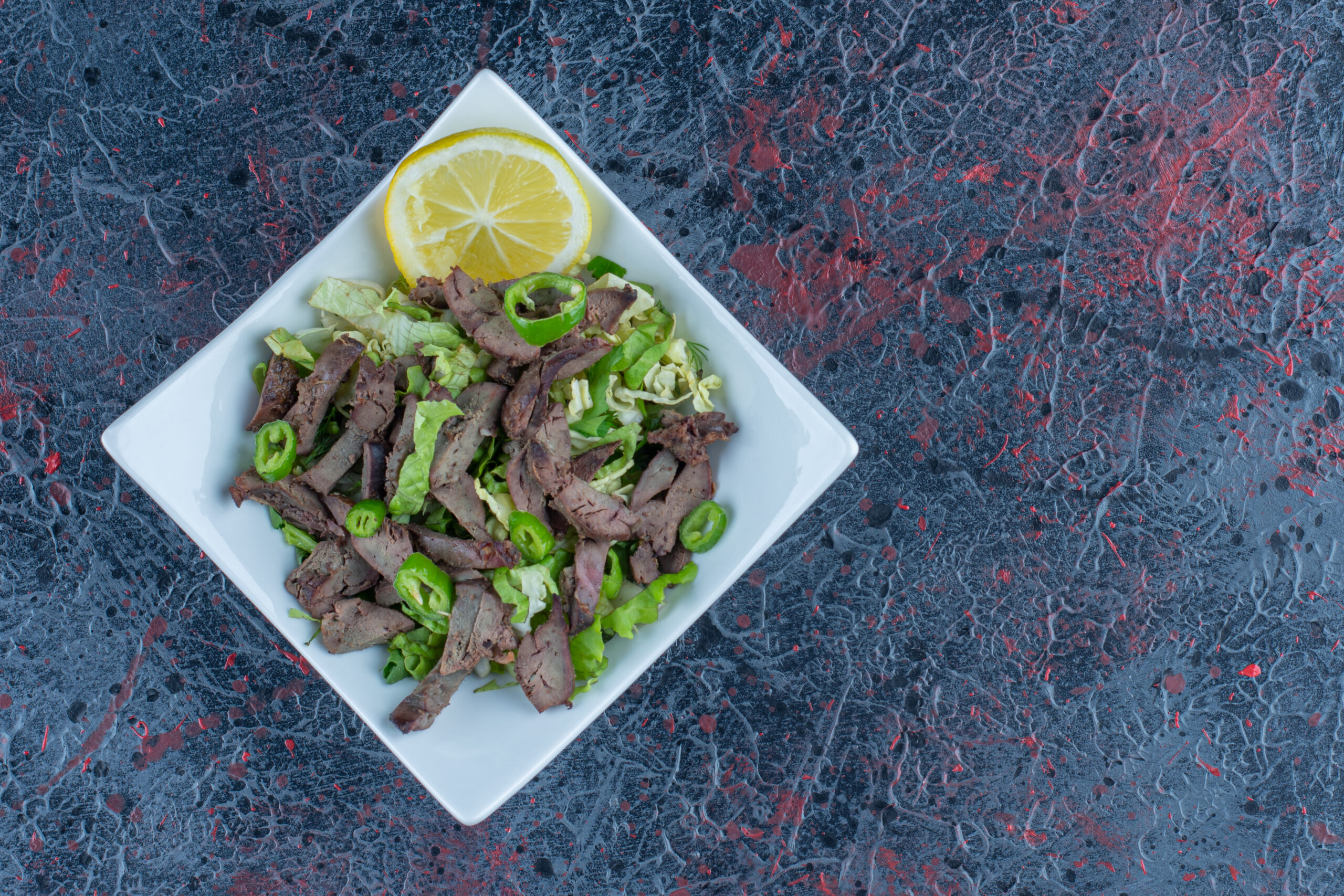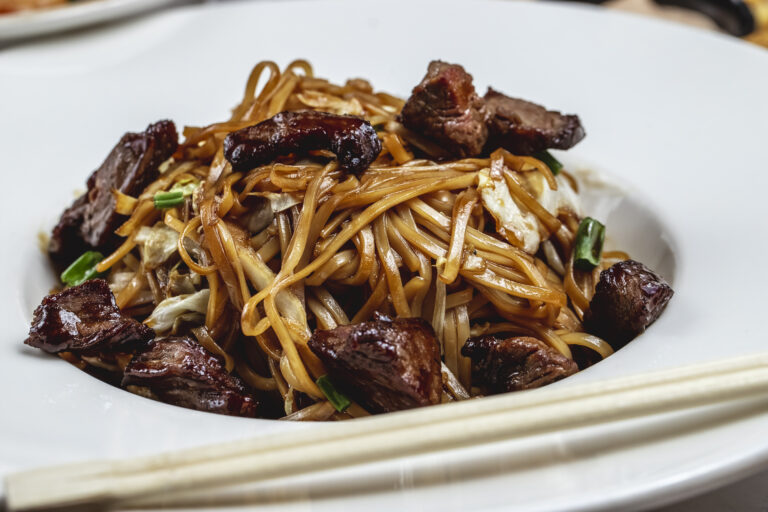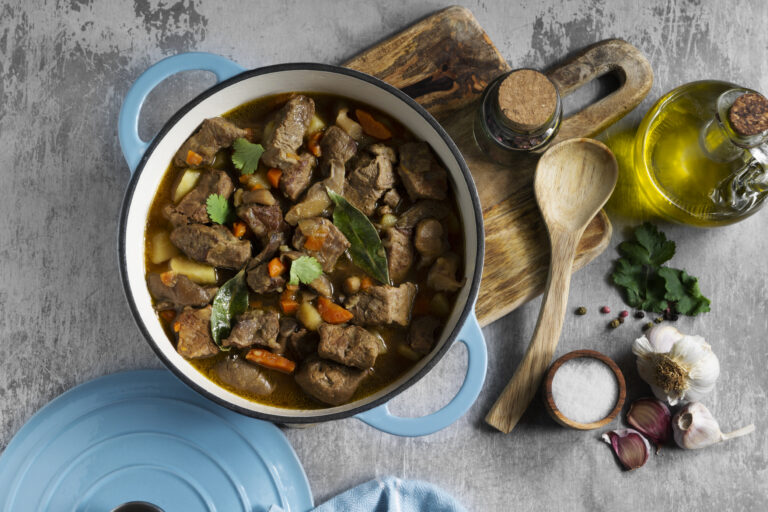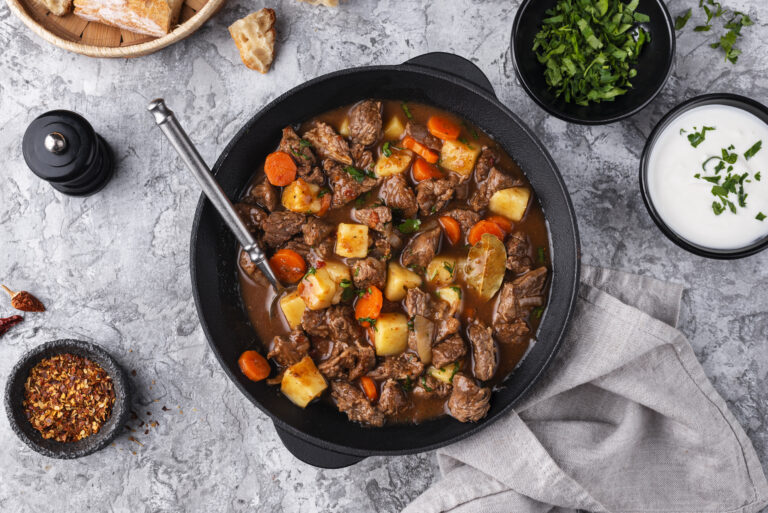The Ultimate Ground Beef Jerky Recipe : Transform Your Kitchen into a Gourmet Snack Factory
There’s something magical about the aroma of seasoned beef slowly transforming into that perfect chewy texture we all crave. I still remember my grandmother’s kitchen, where she’d spend hours preparing homemade jerky that became the highlight of every family gathering. Today, I’m sharing that same passion with you through this foolproof ground beef jerky recipe that brings convenience and flavor together in perfect harmony.
Table of Contents
What Makes Ground Beef Jerky Special?
Ground beef jerky offers several advantages over traditional whole muscle jerky that you’ll immediately appreciate. When you choose ground beef over traditional cuts, you’re setting yourself up for success in multiple ways.
Consistent texture throughout every bite ensures your jerky experience remains uniform. Unlike whole muscle jerky that can vary in chewiness, ground beef creates predictable results every time you make a batch.
Faster preparation time compared to sliced jerky means you’ll spend less time in the kitchen and more time enjoying your homemade snacks. While traditional jerky requires careful slicing and longer marinating periods, ground beef jerky streamlines the entire process.
More affordable than premium cuts makes this recipe accessible to anyone wanting to create gourmet jerky without breaking the bank. You can produce restaurant-quality results using everyday grocery store ingredients.
Easier seasoning distribution for enhanced flavor ensures every bite delivers the taste profile you’re aiming for. The ground texture allows spices to penetrate thoroughly, creating depth that’s harder to achieve with whole cuts.
Perfect for beginners starting their jerky-making journey, this method forgives minor mistakes while delivering professional results that will impress your family and friends.
Essential Equipment for Ground Beef Jerky
Must-Have Tools
Before diving into your ground beef jerky recipe, gather these essential items that will ensure your success:
- Food dehydrator or oven serves as your primary drying mechanism
- Jerky gun or piping bag creates uniform strips with consistent thickness
- Meat thermometer guarantees food safety throughout the process
- Mixing bowls accommodate proper ingredient combination
- Sharp knife handles any additional prep work required
Optional But Helpful Equipment
These items enhance your jerky-making experience without being absolutely necessary:
- Kitchen scale for precise measurements that improve consistency
- Vacuum sealer for extended storage capabilities
- Parchment paper prevents sticking and simplifies cleanup
The Perfect Ground Beef Jerky Recipe
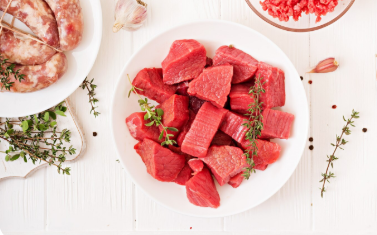
Ingredients Table
| Ingredient | Quantity | Purpose |
|---|---|---|
| Ground beef (93/7 lean) | 2 pounds | Base protein |
| Soy sauce | 1/4 cup | Umami and salt |
| Worcestershire sauce | 2 tablespoons | Depth of flavor |
| Garlic powder | 1 teaspoon | Aromatic enhancement |
| Onion powder | 1 teaspoon | Savory notes |
| Black pepper | 1/2 teaspoon | Spice |
| Smoked paprika | 1 teaspoon | Smoky flavor |
| Red pepper flakes | 1/4 teaspoon | Heat (optional) |
| Liquid smoke | 1/2 teaspoon | Authentic taste |
Step-by-Step Instructions
Preparation Phase
Your journey begins with proper preparation that sets the foundation for exceptional results.
- Mix the marinade: Combine all liquid ingredients in a large bowl, whisking until fully integrated. This creates the flavor base that will penetrate every fiber of your ground beef.
- Add ground beef: Incorporate meat thoroughly with clean hands, ensuring even distribution. Work the mixture until no dry spots remain visible.
- Season perfectly: Blend in all dry spices until evenly distributed throughout the meat mixture. Take your time with this step—proper seasoning distribution makes the difference between good and great jerky.
- Rest the mixture: Refrigerate for 2-4 hours for flavor absorption. This crucial step allows the seasonings to penetrate deeply, developing complex flavors that emerge during the drying process.
Forming and Dehydrating
Transform your seasoned mixture into professional-quality jerky strips through careful forming and controlled dehydration.
- Load the jerky gun: Fill with seasoned meat mixture, eliminating air pockets that could create inconsistent strips.
- Create uniform strips: Extrude 1/4-inch thick strips onto dehydrator trays, maintaining consistent spacing for proper air circulation.
- Set temperature: Maintain 160°F throughout the process—this temperature ensures food safety while preserving texture.
- Dehydrate properly: Process for 4-6 hours until completely dry. Test readiness by bending a strip; properly dried jerky should crack slightly without breaking completely.
Pro Tips for Perfect Results
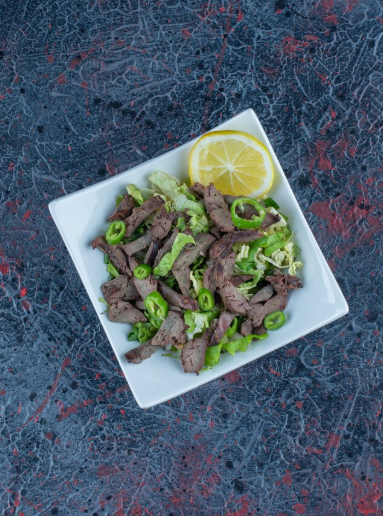
Choosing the Right Meat
Your meat selection directly impacts the final product’s quality and shelf life. Select 93/7 lean ground beef for optimal fat content that balances flavor with preservation. Excessive fat content leads to rancidity and shortened storage life, while too little fat results in overly dry, tough jerky.
Fresh ground beef produces superior texture compared to previously frozen options. When possible, request freshly ground beef from your butcher or grind your own from quality cuts.
Seasoning Secrets
Salt remains crucial for both preservation and flavor development. Don’t skimp on sodium-containing ingredients like soy sauce—they’re essential for proper curing and taste.
Liquid smoke adds authentic smoky flavor without requiring specialized smoking equipment. A little goes a long way, so start conservatively and adjust to taste.
Experiment with spices to create signature flavors that reflect your personal preferences. Document successful combinations for future batches.
Storage and Shelf Life
Proper Storage Methods
Maximize your jerky’s lifespan through appropriate storage techniques:
Vacuum-sealed bags extend shelf life to 2-3 months when stored in cool, dry conditions. Remove all air to prevent oxidation and moisture absorption.
Airtight containers provide convenient storage for 2-3 weeks of freshness. Glass containers work particularly well for maintaining flavor integrity.
Refrigeration isn’t necessary for properly dried jerky but extends freshness and provides additional peace of mind.
Signs of Spoilage
Watch for these indicators that your jerky has exceeded its safe consumption period:
- Off odors or unusual smells
- Visible mold growth
- Slimy or sticky texture
- Unusual discoloration
Nutritional Benefits
Ground beef jerky provides exceptional nutritional value for health-conscious snackers. Each serving delivers 15-20 grams of high-quality protein, supporting muscle maintenance and growth.
Low carbohydrate content makes this recipe ideal for ketogenic and low-carb lifestyles. You’ll get sustained energy without blood sugar spikes.
Essential amino acids support muscle recovery after workouts, making jerky an excellent post-exercise snack.
Iron and B vitamins contribute to energy metabolism and overall wellness, providing nutrients often lacking in processed snacks.
Common Mistakes to Avoid
Temperature Control Issues
Excessive temperature creates tough, overcooked jerky that’s unpleasant to eat. Maintain consistent 160°F throughout the drying process.
Insufficient heat results in unsafe preservation and potential bacterial growth. Always verify your equipment maintains proper temperature.
Inconsistent temperature causes uneven drying, creating some strips that are overdone while others remain underprocessed.
Seasoning Problems
Under-seasoning produces bland results that waste your time and ingredients. Taste your mixture before forming and adjust as needed.
Over-salting creates overwhelming flavors that mask other seasonings. Build salt levels gradually rather than adding large quantities at once.
Insufficient mixing leads to uneven flavor distribution, resulting in some strips being perfectly seasoned while others lack taste entirely.
Flavor Variations
Popular Seasoning Combinations
Expand your jerky repertoire with these proven flavor profiles:
Teriyaki Style: Add honey and fresh ginger for sweet, Asian-inspired flavors that complement the beef’s natural richness.
Spicy Cajun: Include cayenne pepper and additional paprika for heat lovers who appreciate bold, Southern-inspired tastes.
Mediterranean: Use oregano and rosemary to create herbaceous flavors reminiscent of European cuisine.
BBQ Classic: Incorporate brown sugar and cumin for traditional barbecue flavors that appeal to wide audiences.
Troubleshooting Guide
Texture Problems
Overly brittle jerky indicates excessive drying time. Reduce processing duration and check strips more frequently during future batches.
Excessively chewy results suggest insufficient dehydration. Increase drying time while maintaining proper temperature.
Uneven texture stems from inconsistent strip thickness. Focus on uniform extrusion during the forming process.
Flavor Issues
Lack of taste indicates insufficient seasoning or inadequate marinating time. Increase both for more pronounced flavors.
Overwhelming saltiness requires reducing sodium-containing ingredients in subsequent batches.
Bitter aftertaste often results from expired spices. Replace seasonings regularly and store them properly.
Frequently Asked Questions
Can I make ground beef jerky without a dehydrator?
Absolutely! Use your oven set to its lowest temperature (170°F or below) with the door slightly open for air circulation. This method requires more attention but produces comparable results.
How long does homemade ground beef jerky last?
When properly stored in airtight containers, your ground beef jerky maintains freshness for 2-3 weeks at room temperature. Vacuum sealing extends this to 2-3 months.
What’s the best ground beef jerky recipe for beginners?
The recipe provided above balances simplicity with excellent flavor results, making it perfect for first-time jerky makers.
Can I freeze ground beef jerky?
Yes, properly packaged jerky freezes well for up to 6 months without significant quality loss. Thaw at room temperature before consuming.
Why is my ground beef jerky tough?
Tough jerky usually results from over-dehydrating or using meat with excessive fat content. Monitor drying time carefully and select appropriate ground beef.
Conclusion
Creating perfect ground beef jerky at home transforms your kitchen into a gourmet snack factory that produces healthier, more economical alternatives to store-bought options. This comprehensive recipe and guide provide everything needed to produce restaurant-quality jerky that rivals any commercial version.
The key lies in selecting quality ingredients, maintaining proper temperatures, and allowing adequate drying time. Whether you’re meal prepping for the week or creating healthy snacks for outdoor adventures, this ground beef jerky recipe delivers consistent, delicious results every time.
Start your jerky-making journey today and discover the satisfaction of crafting this timeless preserved meat snack in your own kitchen. Your family will thank you, your wallet will appreciate the savings, and you’ll enjoy the pride that comes from creating something truly special with your own hands.
Ready to begin? Gather your ingredients, fire up your dehydrator, and let’s create some incredible ground beef jerky together!

